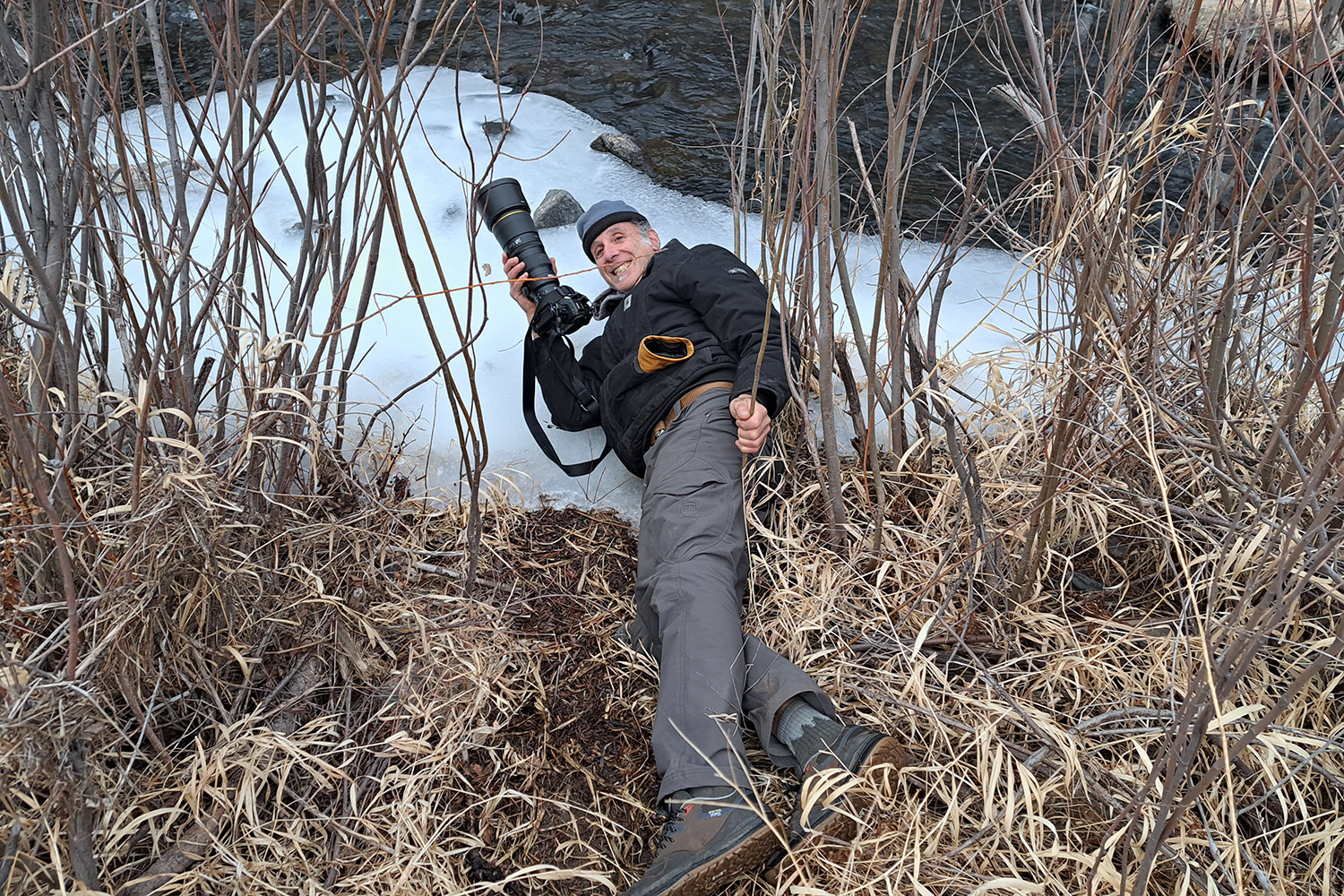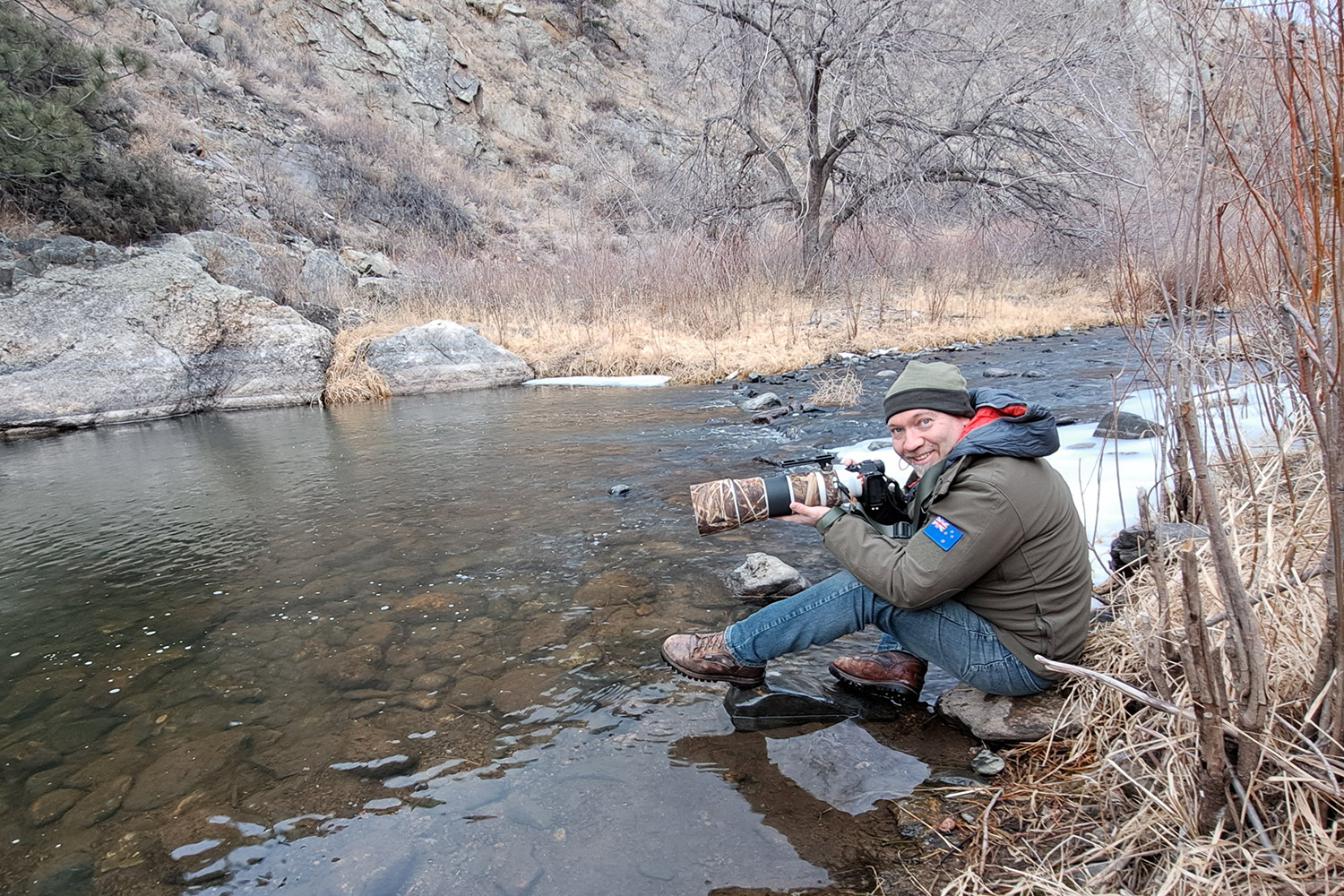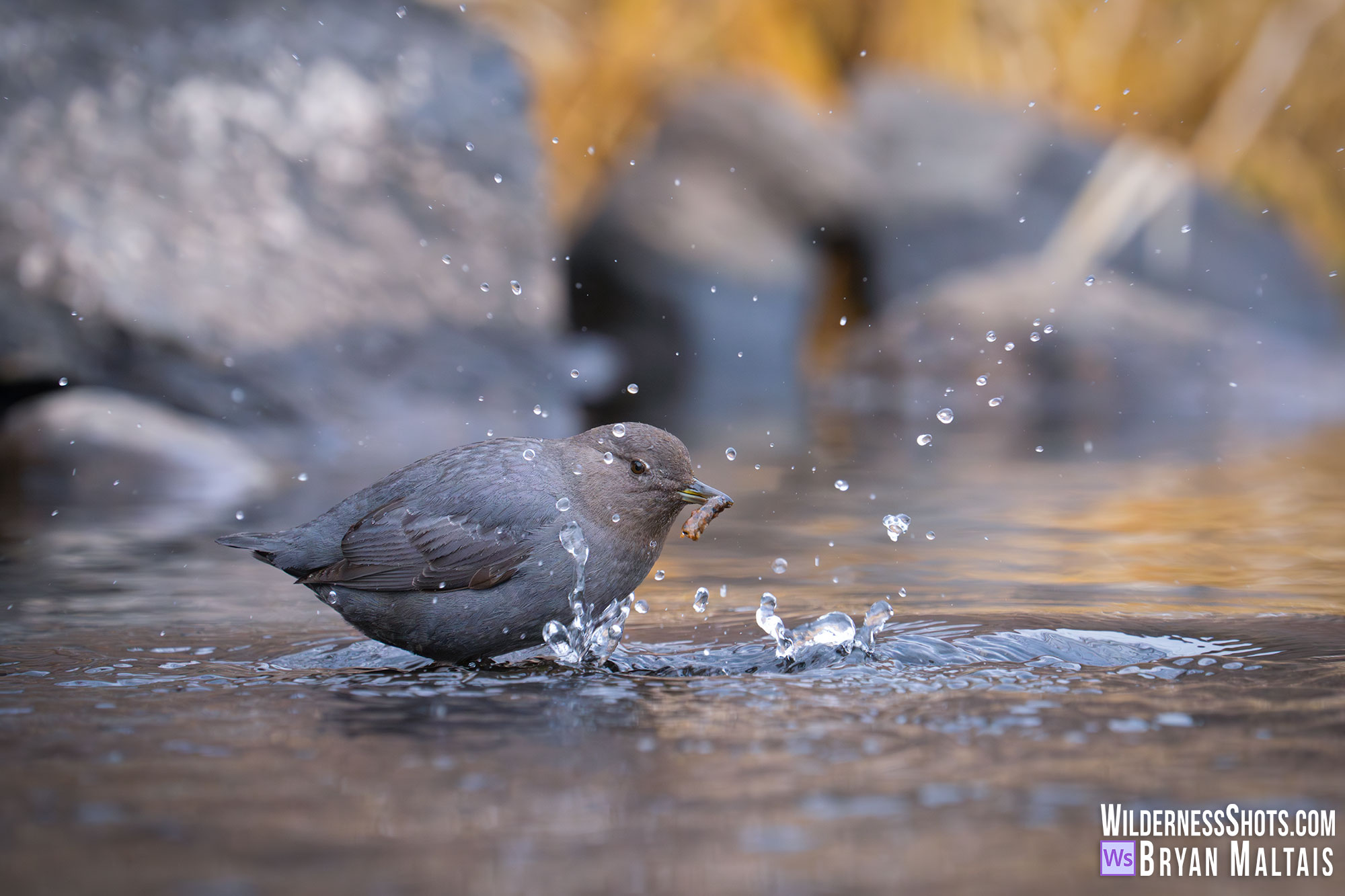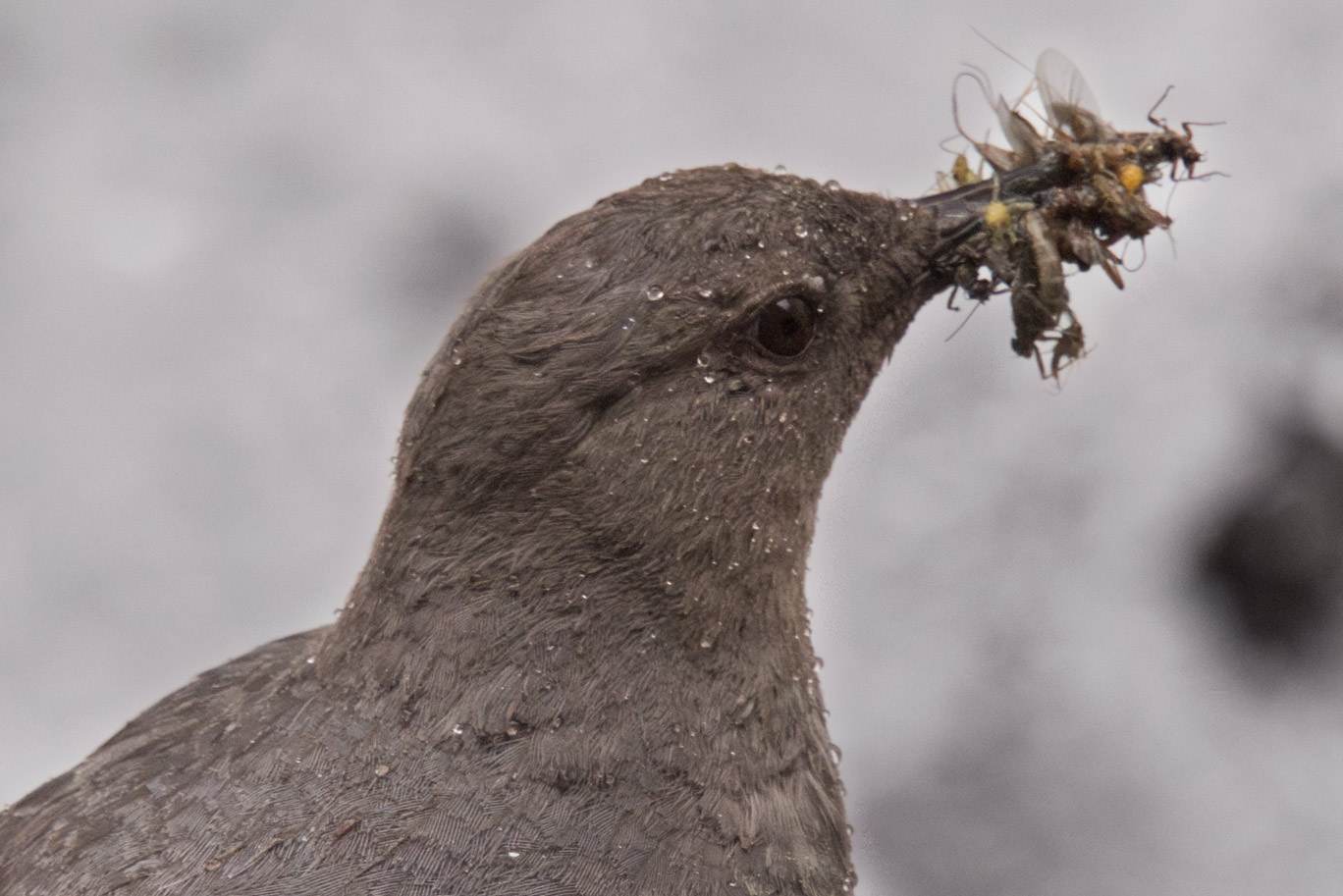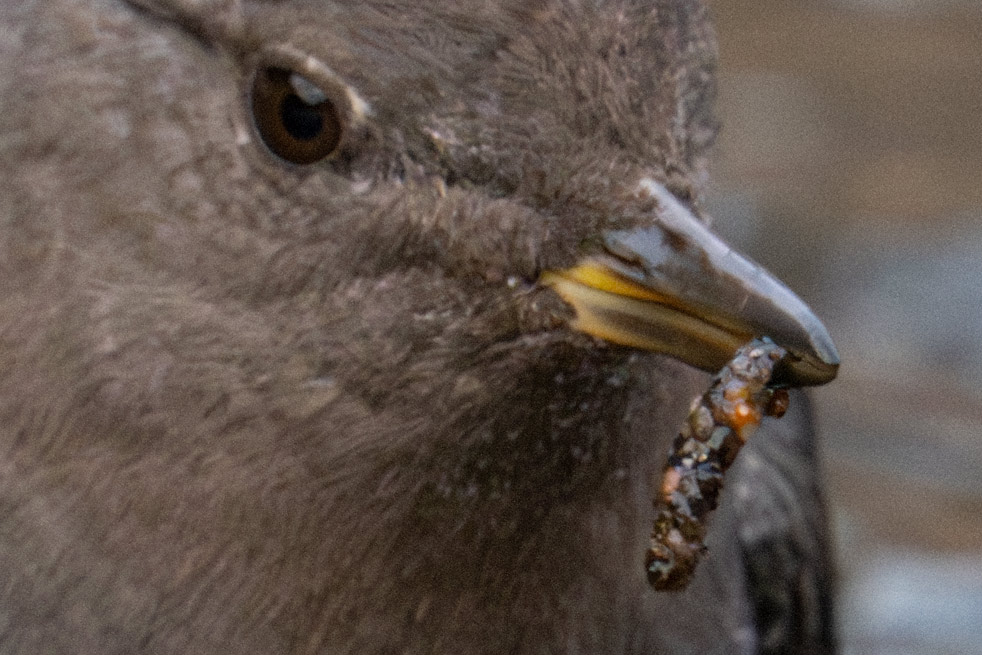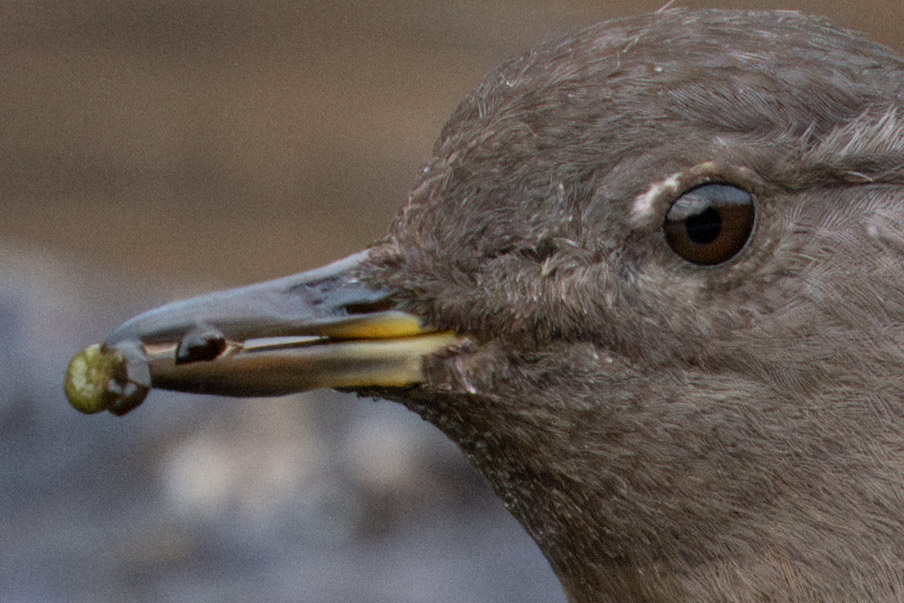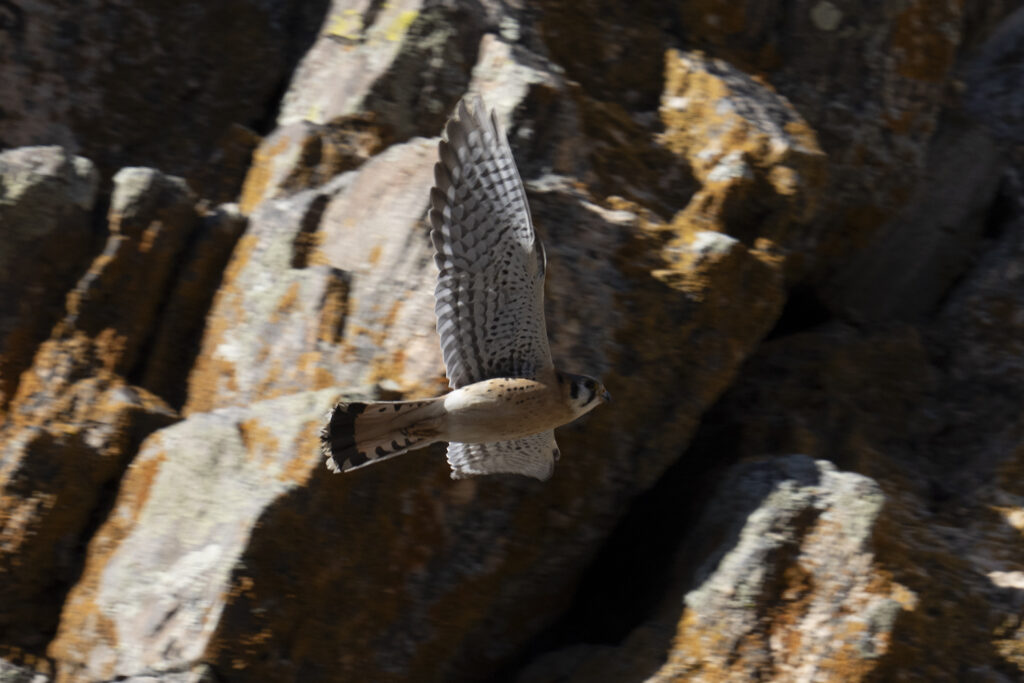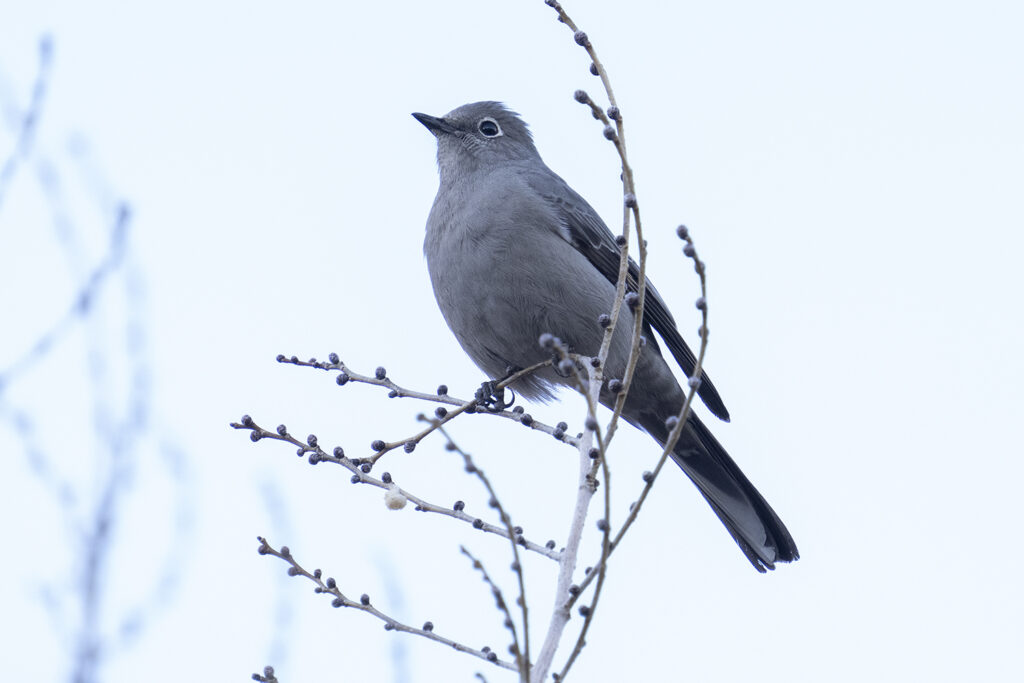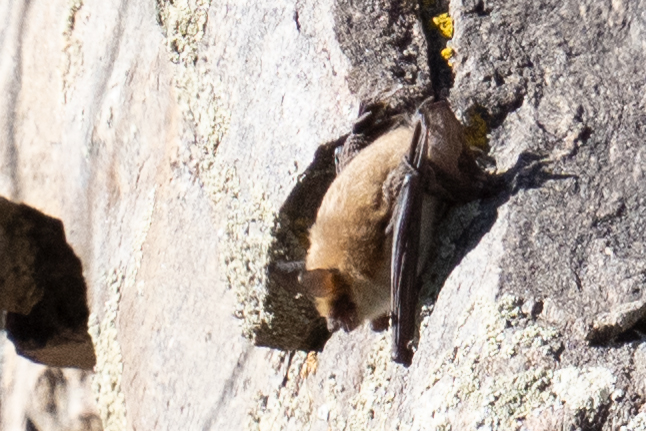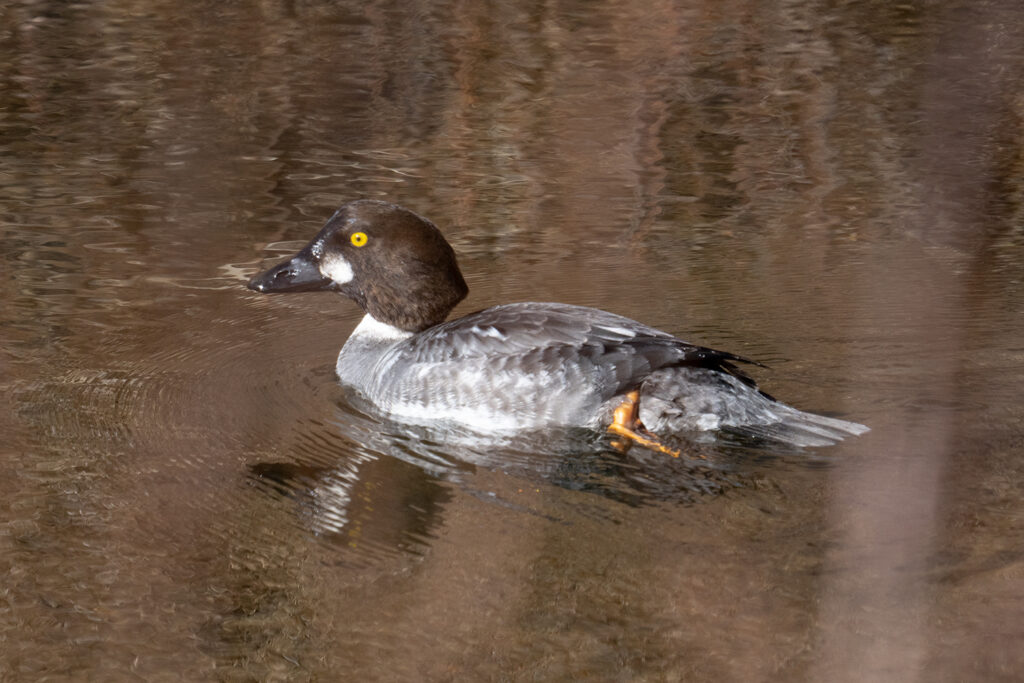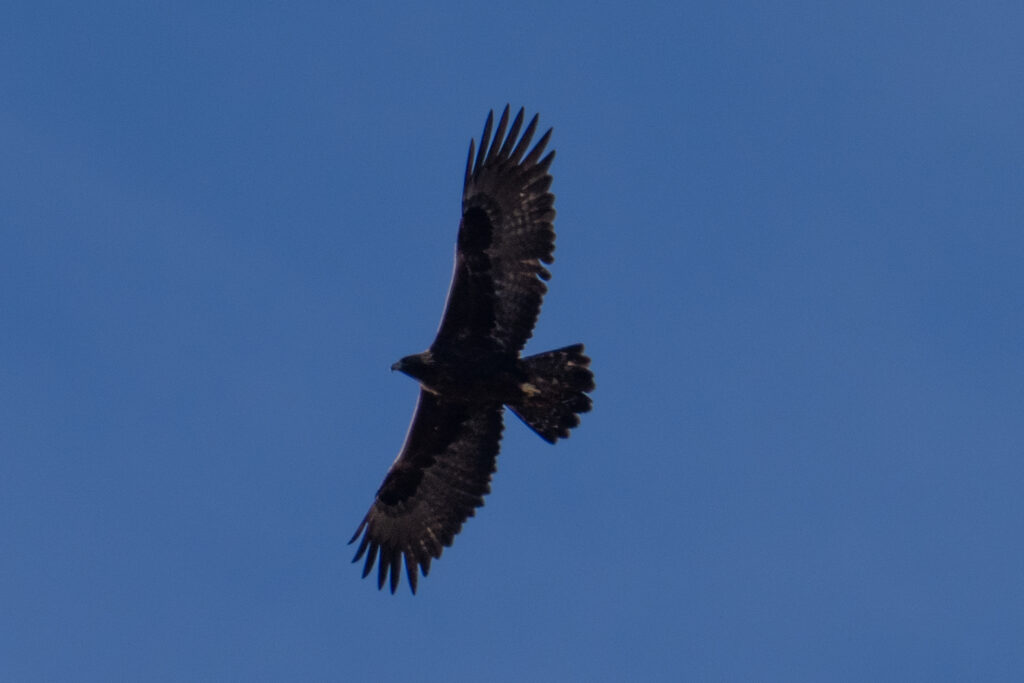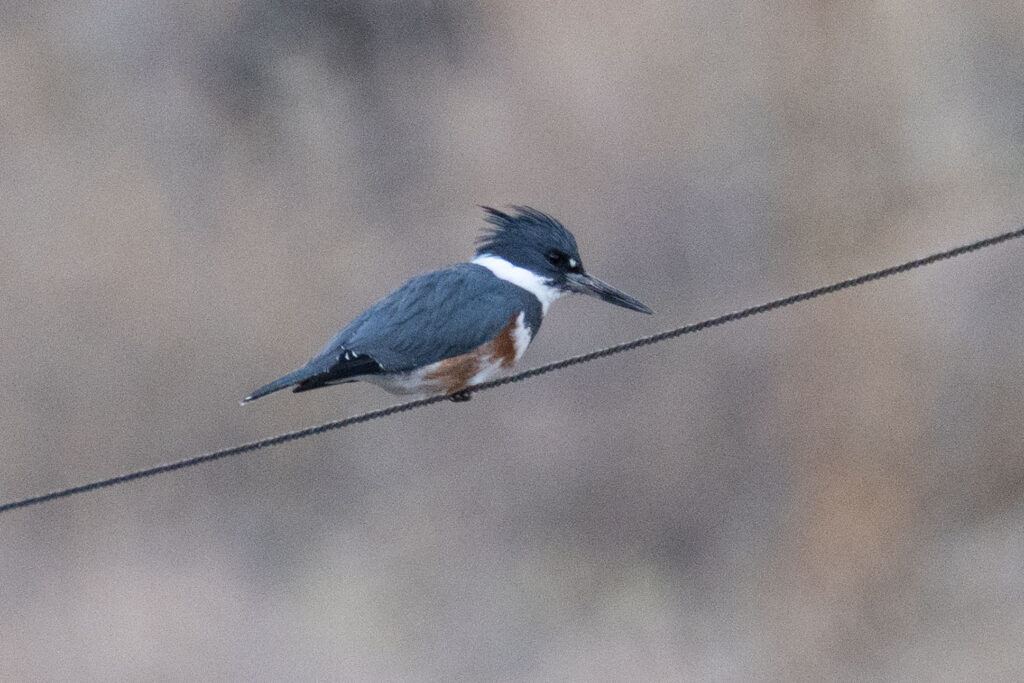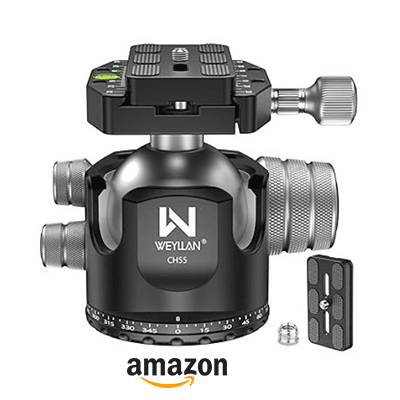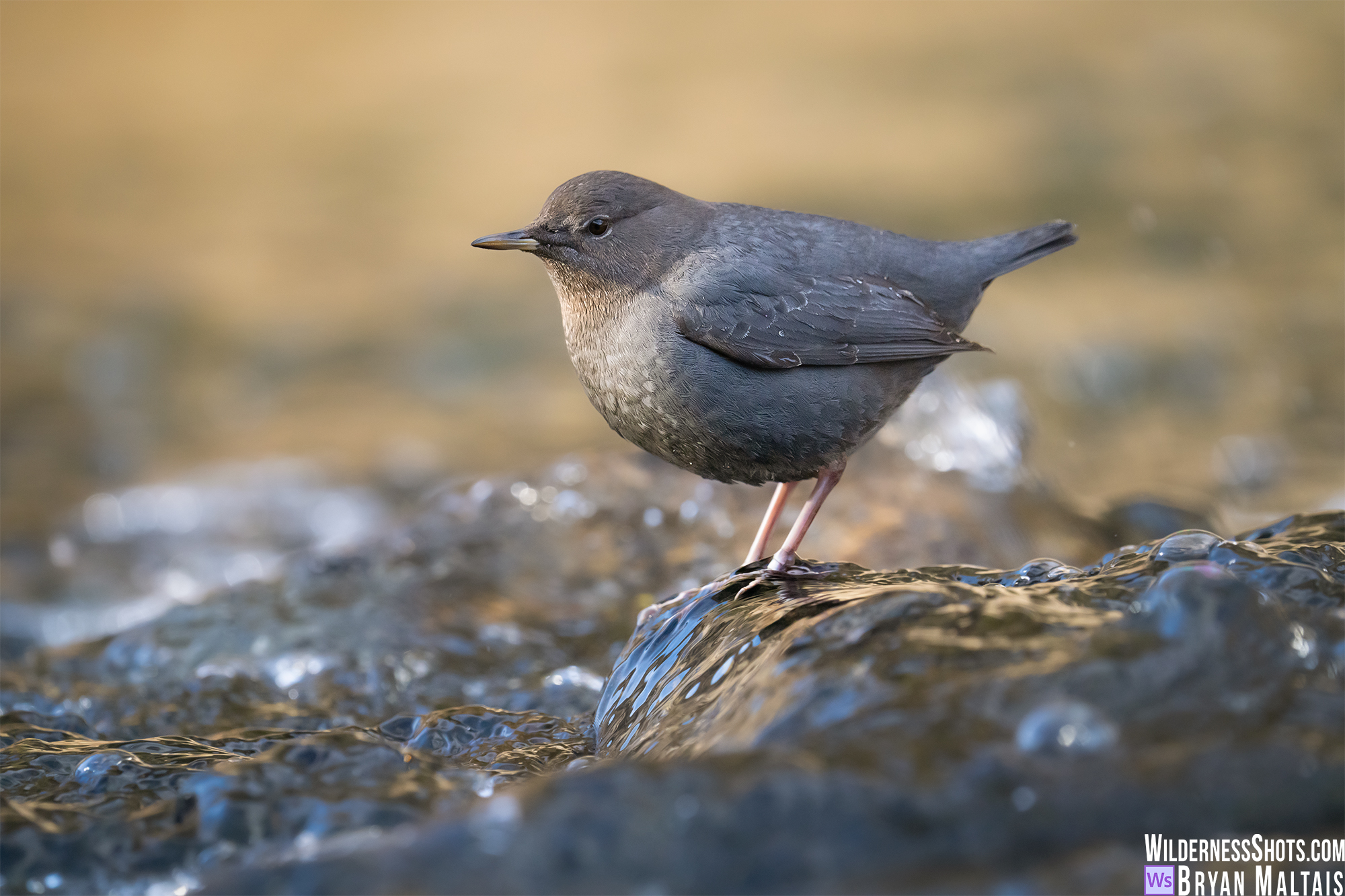
Sony A7rV, Sony 200-600mm @ 590mm. f/8, 1/500th sec, ISO 4000
My friend and amazing photographer Phil suggested we head up the Poudre Canyon to photograph American Dippers on a January afternoon. Phil and I have run in to each other a few times across the American west while out shooting birds. Once in Colorado to shoot a Greater Sage grouse lek and another down at Bosque del Apache for the Sandhill Crane/Snow Goose migration. At the last meeting we promised we’d go out shooting together since we both live in Ft. Collins. We spent a gorgeous afternoon in the Front Range Mountains west of Fort Collins shooting Dippers along the Cache le Poudre River. This cold, white-water river that originates in Rocky Mountain National Park is frequented by fly fishermen and kayakers.
The American Dipper affords the rare opportunity to capture frame-filling shots of a songbird in its natural setting. Bird photographers know how notoriously difficult this is. Telephoto lenses aren’t as powerful as their size may suggest. You still have to get within 10-15 ft of small birds. Without a feeding station, shooting from a blind, or the birds being habituated, getting this close is very difficult because songbirds are wary.
Dippers, on the other hand, tend to be pretty tolerant of close human presence. As long as you don’t move around too much, they seem to readily forget about you and concentrate on foraging. Sometimes they pass right in front of the lens. This could also just be an artifact of habituation. Trails in the Rockies usually follow streams, so resident Dippers are used to hikers and trout fishermen. It would be interesting to see if Dippers with irregular human contact are also laid back.
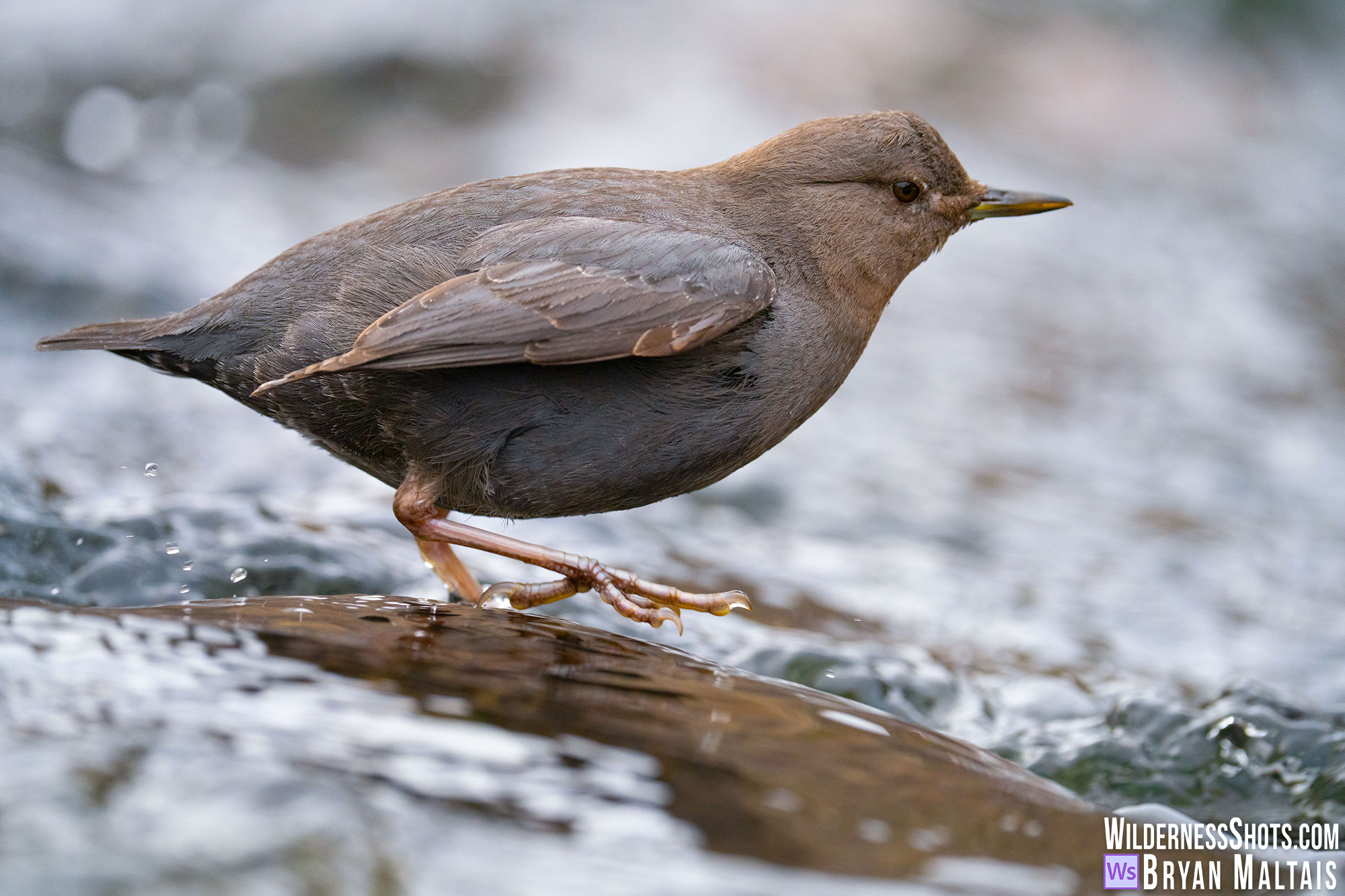 Sony A7rV, Sony 200-600mm @ 590mm. f/8, 1/800th sec, ISO 5000
Sony A7rV, Sony 200-600mm @ 590mm. f/8, 1/800th sec, ISO 5000
The American Dipper is common along mountain streams in western North America. In fact, I can’t remember ever not seeing Dippers on hikes along alpine streams. Despite their drab colors, they make excellent photo subjects because there’s always splashing water in the composition. What they lack in color, they make up for with fascinating behavior. They’re the only aquatic songbird, taking short dives under water in search of arthropods. Sometimes they work the same stretch of river for hours back and forth. This predictable pattern makes it easy to anticipate shots.
Shop Super-zoom lenses on Amazon This blog contains Amazon affiliate links. Clicking on them and shopping on Amazon as you normally would supports this blog by generating small commissions.
This blog contains Amazon affiliate links. Clicking on them and shopping on Amazon as you normally would supports this blog by generating small commissions.
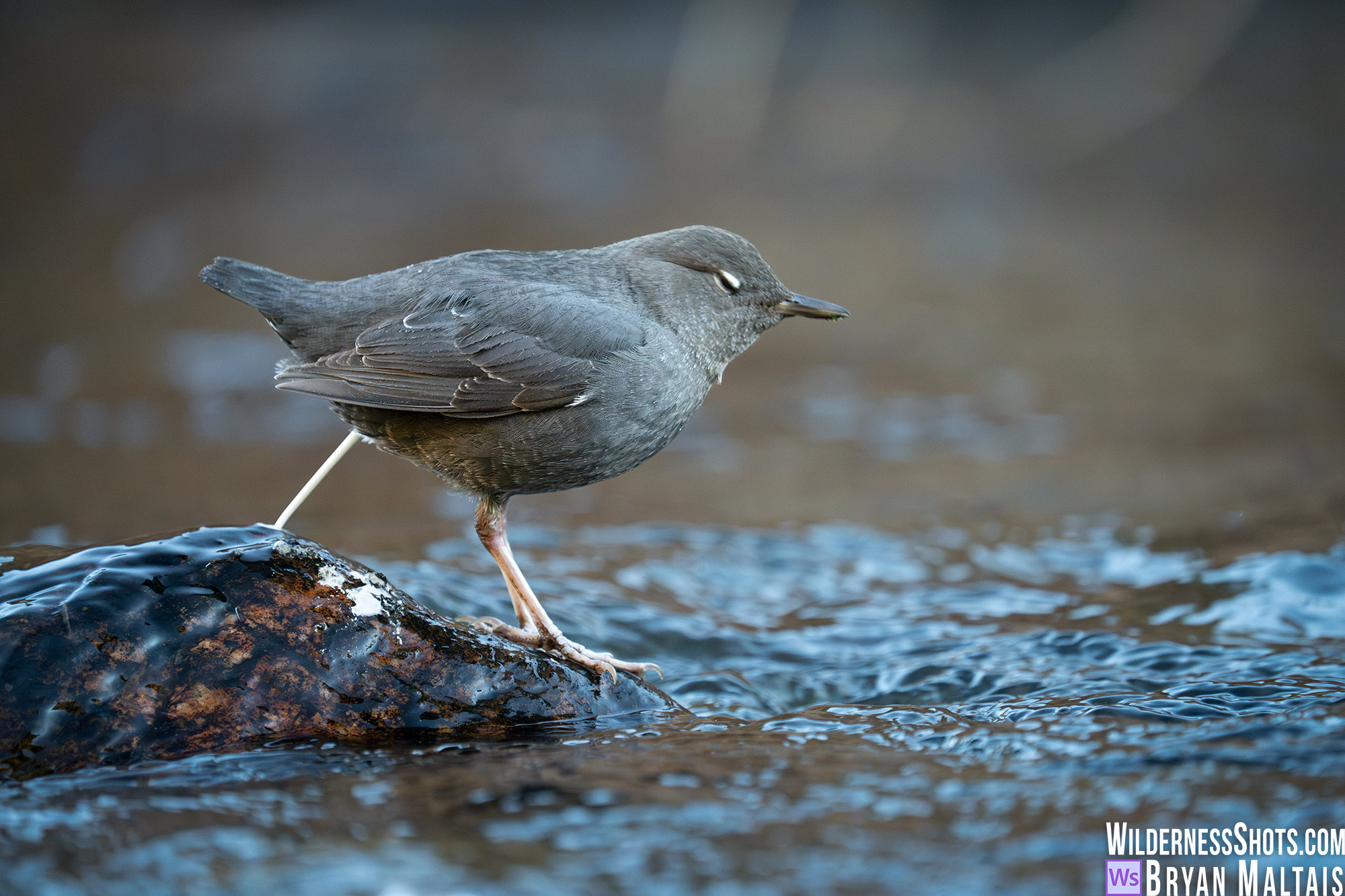 Squirt! Dippers’ digestive tracts turn crunchy arthropods into milk. Sony A7rV, Sony 200-600mm @ 590mm. f/6.3, 1/500th sec, ISO 6400
Squirt! Dippers’ digestive tracts turn crunchy arthropods into milk. Sony A7rV, Sony 200-600mm @ 590mm. f/6.3, 1/500th sec, ISO 6400
Dippers constantly bob up and down as they walk along the river. They actually take their name from this behavior and not from dipping in the water. Ornithologists theorize this may be a way to blend in with the churning water, although I’m usually able to spot them because of this motion. When standing still, their gray coloring makes them disappear in the rocks. Another theory posits that bobbing, along with flashing their white eyelids when they blink, signals to other Dippers. I think their playful sounding nickname, the Water Ouzel, fits this whimsical movement.
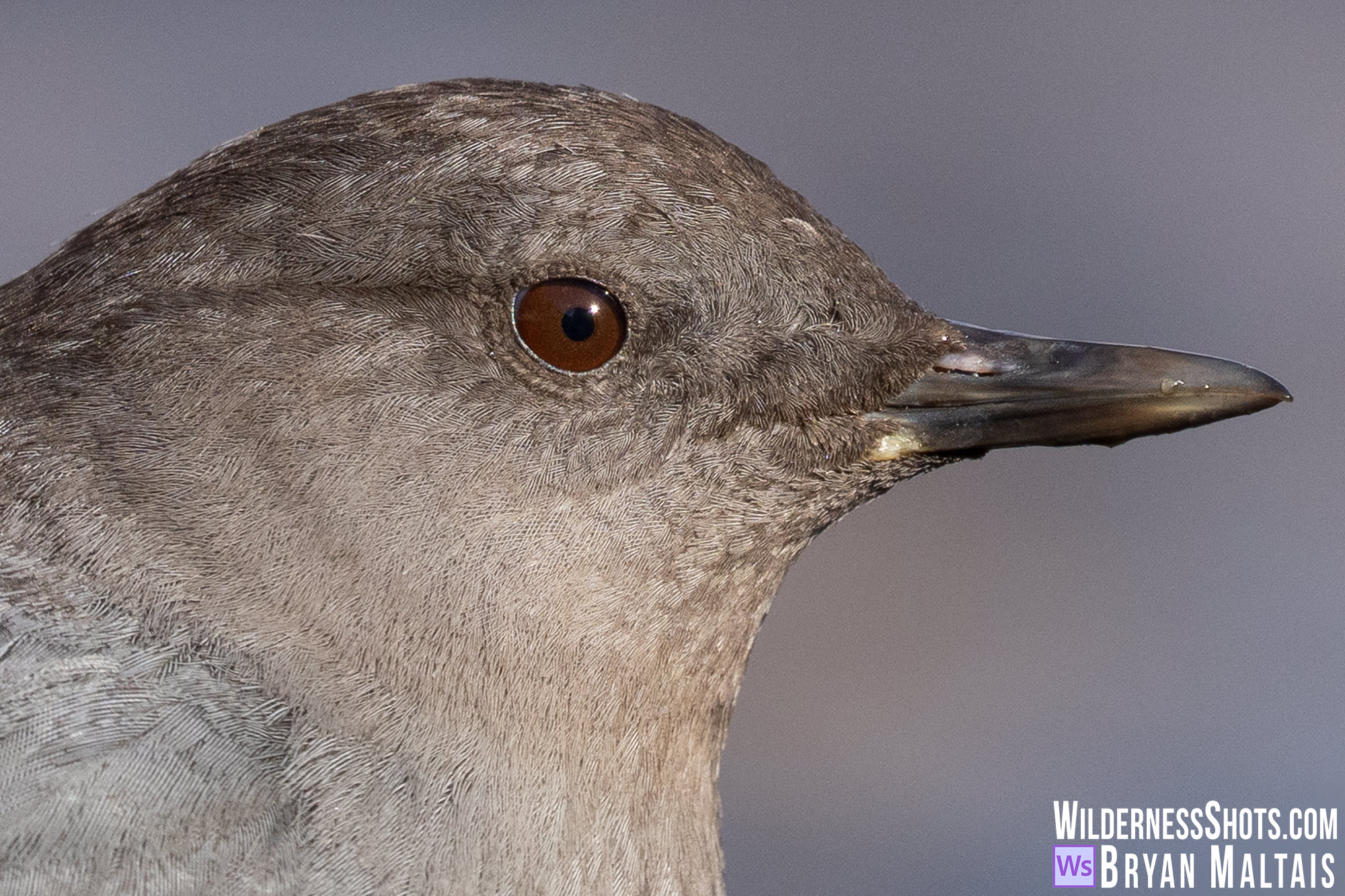 Dippers preen frequently to coat their water-shedding feathers with oil produced by the uropygial gland. This photo is a 300% crop. The sharpness of the Sony 200-600mm lens is pretty good for a sub $2000 zoom.
Dippers preen frequently to coat their water-shedding feathers with oil produced by the uropygial gland. This photo is a 300% crop. The sharpness of the Sony 200-600mm lens is pretty good for a sub $2000 zoom.
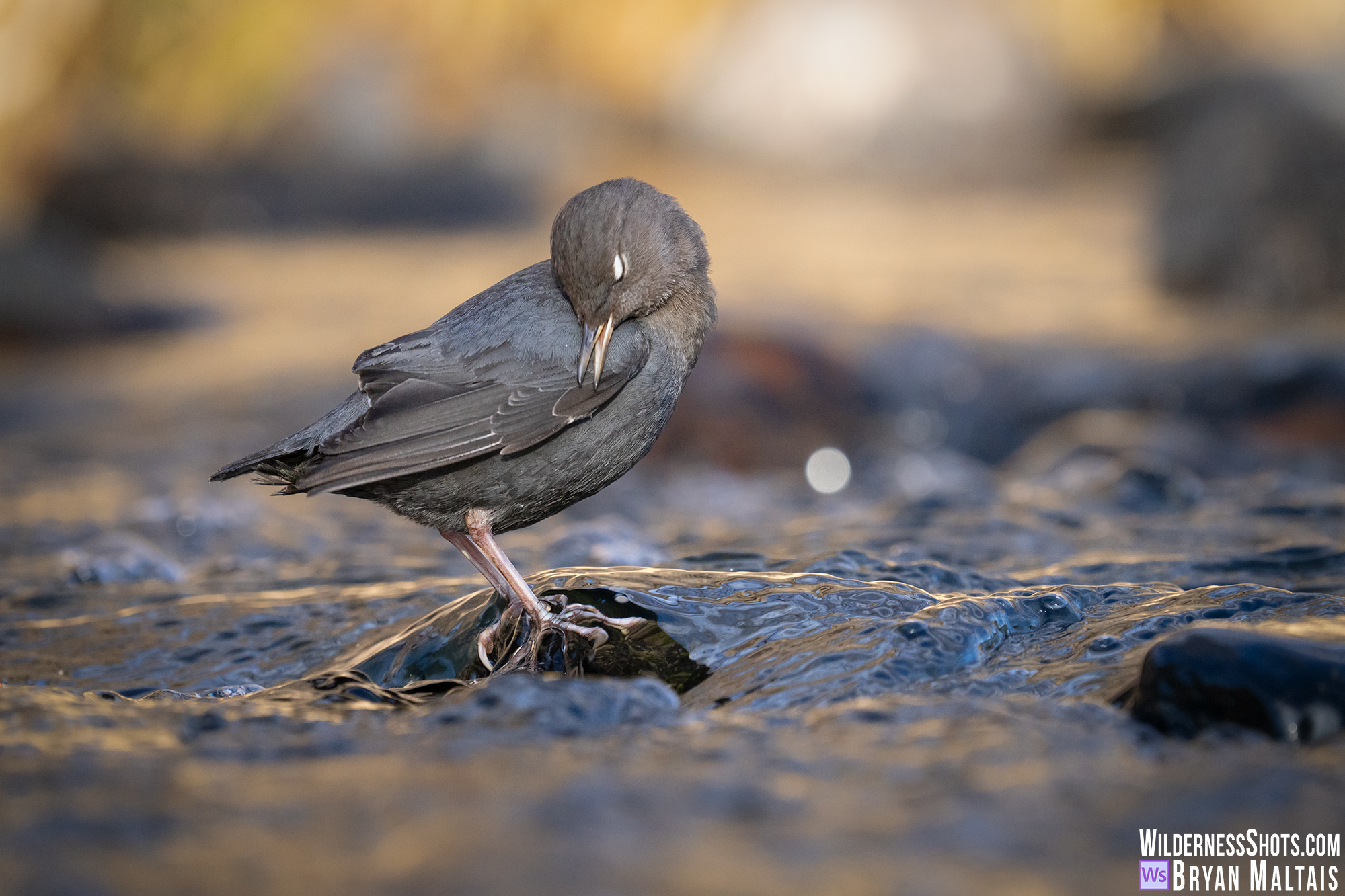 Dippers are territorial, patrolling their turf as they fly up and down the river. I noticed that some dippers that were foraging stopped what they were doing and flattened their body when certain other Dippers flew over. Some Dippers who didn’t exhibit this subservient display got attacked and driven off by more dominant birds.
Dippers are territorial, patrolling their turf as they fly up and down the river. I noticed that some dippers that were foraging stopped what they were doing and flattened their body when certain other Dippers flew over. Some Dippers who didn’t exhibit this subservient display got attacked and driven off by more dominant birds.
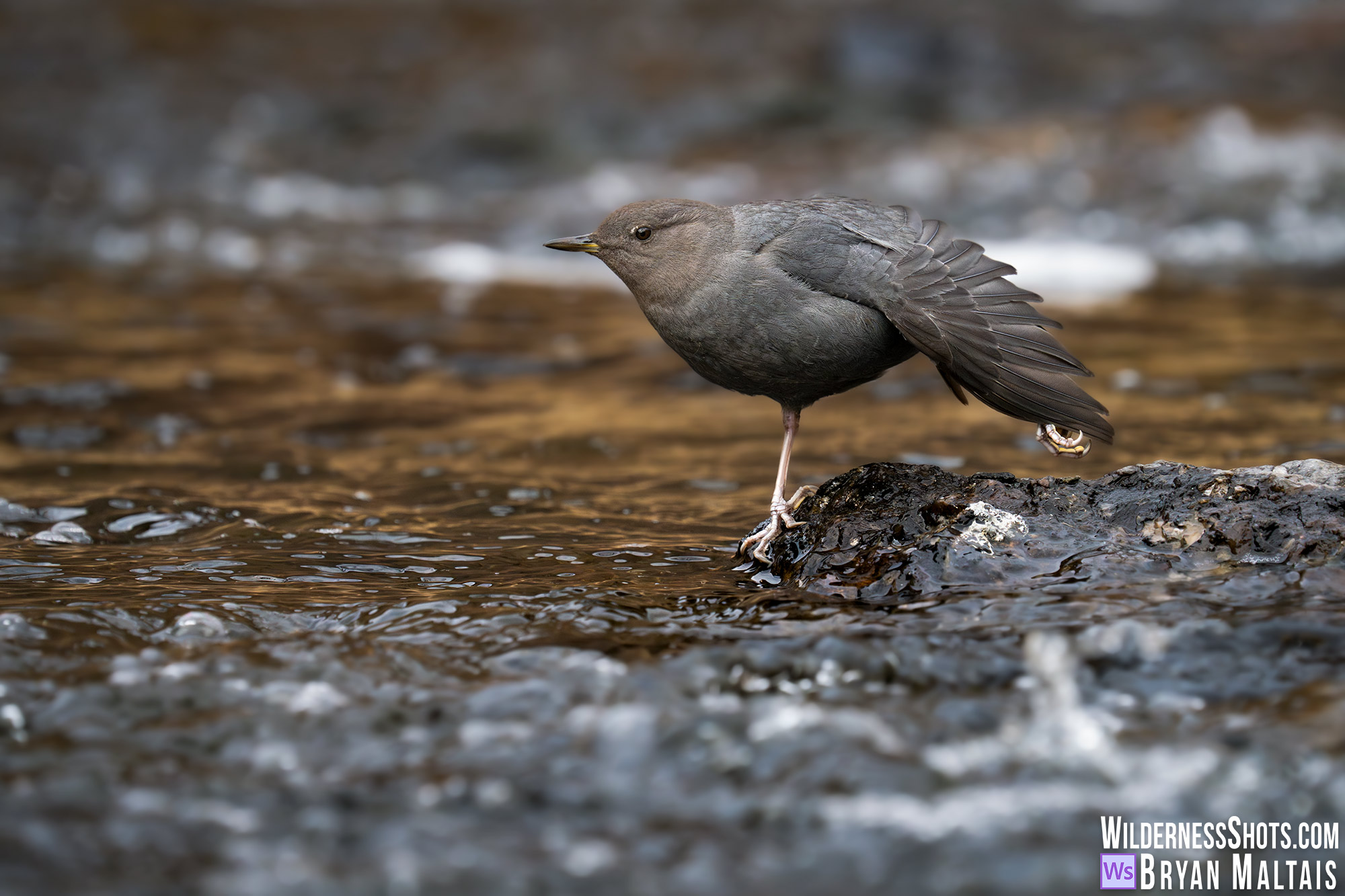 Sony A7rV, Sony 200-600mm @ 590mm. f/8, 1/640th sec, ISO 4000
Sony A7rV, Sony 200-600mm @ 590mm. f/8, 1/640th sec, ISO 4000
When Dippers are raising young in summer, you can observe them stacking their beak full of insects. Rather than swallowing the morsels on the spot, they make constant sorties back and forth to feed their chicks back at the nest. They fly along the river-course like a highway. I’ve seen them fly directly through waterfalls to reach their nest in the cliff side.
What do American Dippers Eat?
American Dippers are experts at poking their head underwater and uncannily plucking insect larvae off the river bottom. In Colorado, they eat mainly Mayfly, Stonefly, Caddisfly and Midges. They’ll also opportunistically feed on terrestrial insects that may wander by. In the enlarged photos, it appears that Dippers were feeding on Caddisfly and Green Stonefly larvae. Caddisfly larvae construct a protective tube by weaving together sand grains and other tiny particles with their silk. They carry the tube around just like a hermit crab’s shell and can retract inside of it.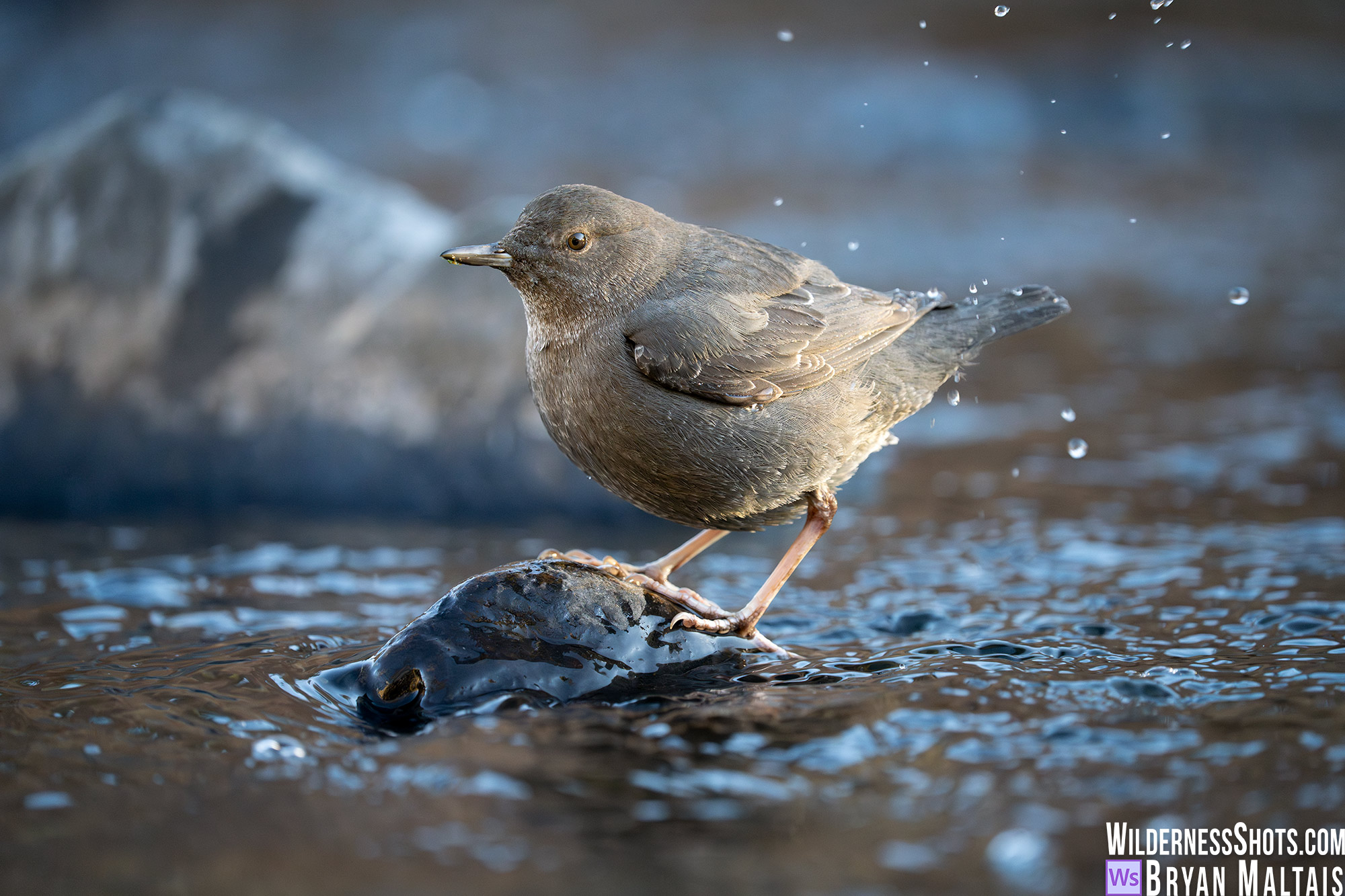 Sony A7rV, Sony 200-600mm @ 590mm. f/6.3, 1/500th sec, ISO 6400
Sony A7rV, Sony 200-600mm @ 590mm. f/6.3, 1/500th sec, ISO 6400
Camera Settings and Technique
The key to photographing Dippers is getting eye-level with them. This requires laying your your belly, or looking down on the tilting view screen while holding the camera low to the ground. I shot in Manual Mode with Auto ISO, as I usually do with wildlife. For focus, I used the A7rV’s bird eye auto focus in AF-C mode, which works very well. White Balance was on auto and Exposure Metering was on center weighted.
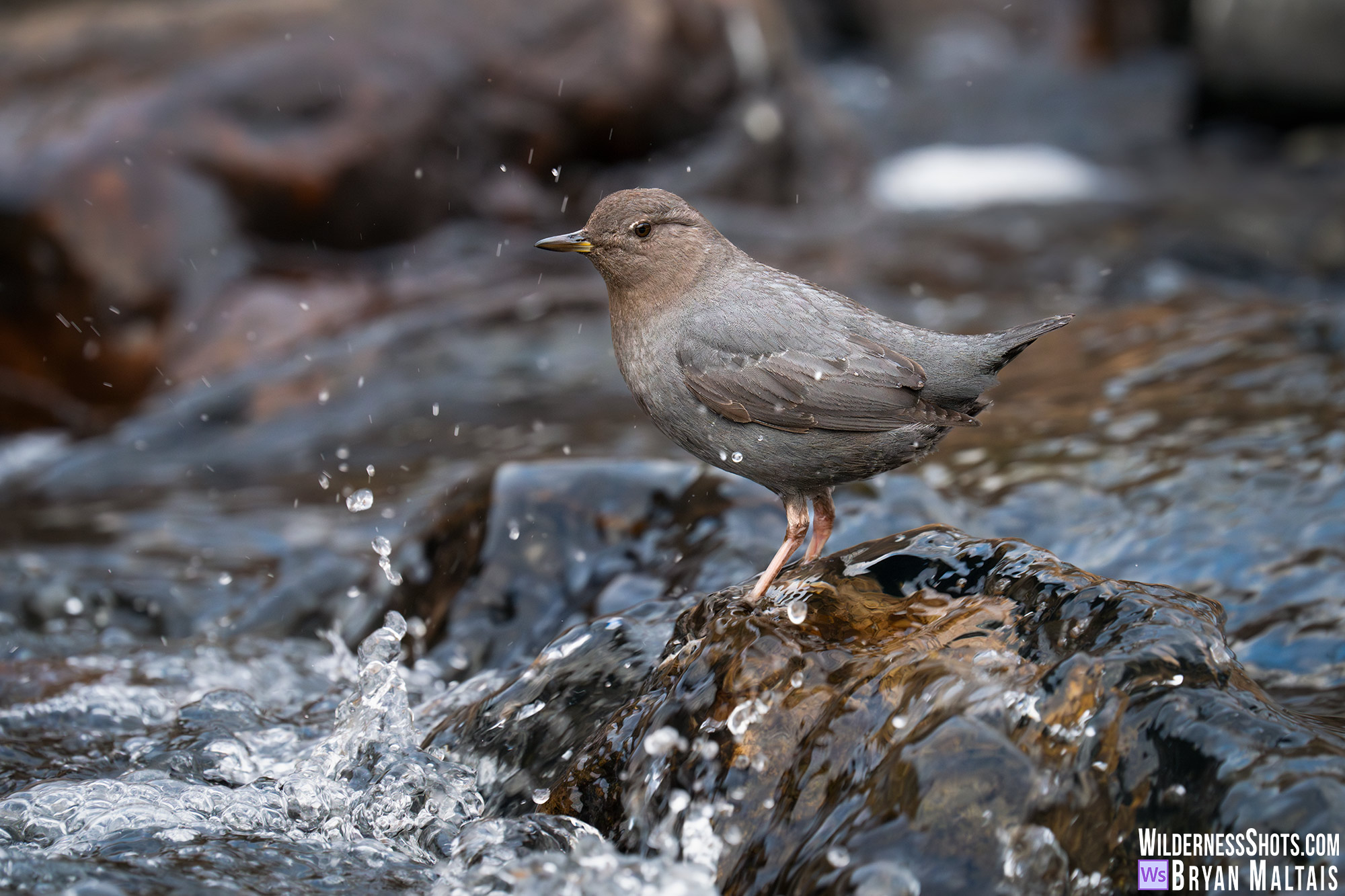 Sony A7rV, Sony 200-600mm @ 590mm. f/8, 1/500th sec, ISO 5000
Sony A7rV, Sony 200-600mm @ 590mm. f/8, 1/500th sec, ISO 5000
Since I needed a fast shutter speed in fairly dim light, high ISO up to 6400 was a necessity. Adobe’s AI denoise cleaned up grain amazingly well.
The Poudre Canyon is a great place to encounter many other bird and wildlife species. In this spot I always saw Golden Eagle soaring overhead, Kestrel flying among the cliffs, Belted Kingfishers angling, Townsend’s Solitaire and Goldeneye ducks. Unfortunately, I also say a bat flying around on this unseasonably warm January day. Coming out of hibernation only to find too few insects to feed on could cause it to starve. It could also be indicative of an infestation of white-nosed syndrome; a fungus that irritates bats out of hibernation, causing them to starve.
These record shots show the animal diversity that can be witnessed when you sit still in a spot and observe what wanders by.
I can’t wait to return to capture the Dippers in different light and weather!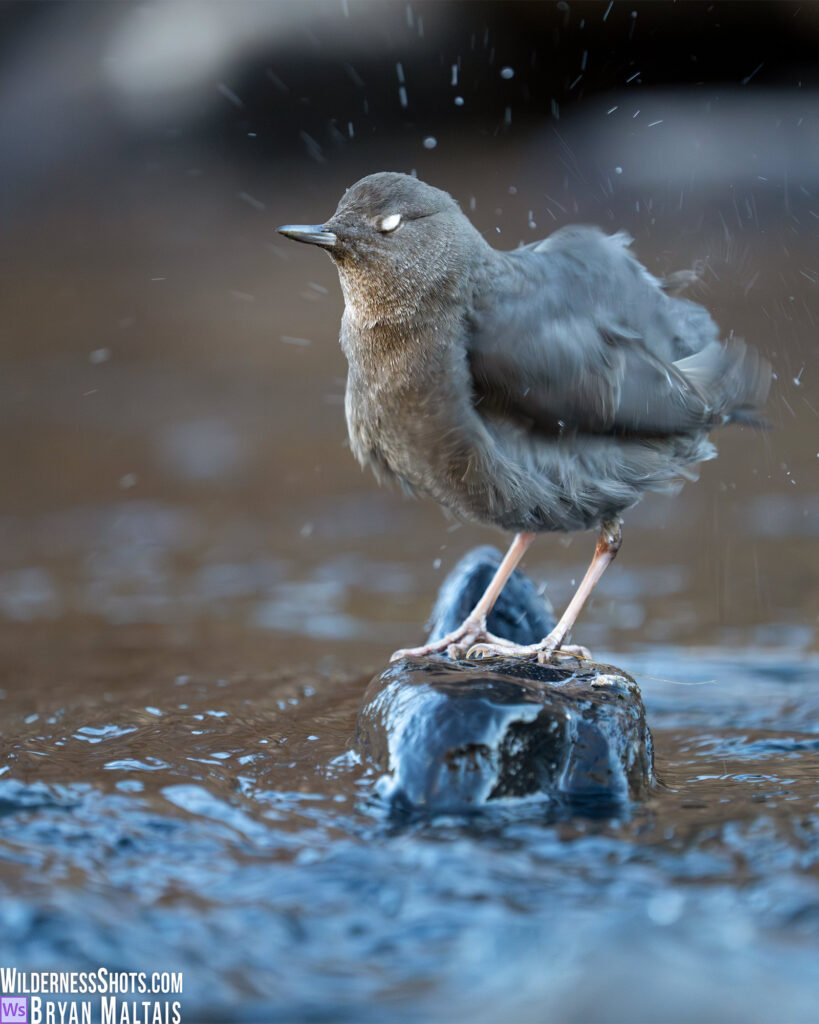 Dippers white eyelids signal other dippers in a noisy environment of rushing water where subtle sounds may be suppresed. Sony A7rV, Sony 200-600mm @ 590mm. f/6.3, 1/500th sec, ISO 6400
Dippers white eyelids signal other dippers in a noisy environment of rushing water where subtle sounds may be suppresed. Sony A7rV, Sony 200-600mm @ 590mm. f/6.3, 1/500th sec, ISO 6400

